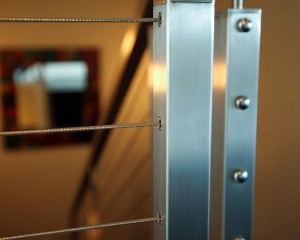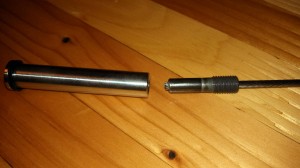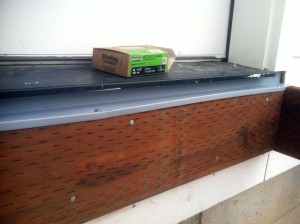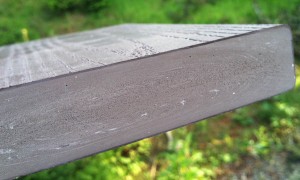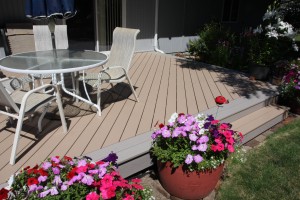Discrete stainless steel cable railing ends look great.
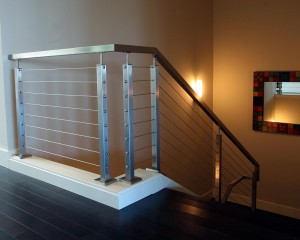
Stainless steel cable railing with discrete cable ends crests the aesthetics bar for interior rail on this multi-million dollar home in Issaquah.
Cable railings
In the past the only aesthetic downside to stainless steel cable railing was the crimp on cable ends. The rail extrusions looked great, the cables looked great but, those ends… They looked they they escaped off a commercial fishing boat. OK, maybe that is a tad harsh but, they always seemed a little out of place on such a fine part of a building or home’s architecture. the places where the wire was crimped into the end was visible and sometimes even bent the end somewhat. Some suppliers still use this set up.
Discrete cable ends
MBA Deck and Fence has uses a discrete cable end that is housed completely inside the post extrusion. All that comes out of the post is cable. This creates a sleek, minimalist and ultra-modern appearance on the railing. This product can be used with stainless steel railing, aluminum railing or well-built wood railings. Only slightly more than a conventional end but, faster to install they make a cost effective improvement to any cable railing.
How a discrete cable end works
One end of the cable run is crimped into a threaded carrier that is tightened into a sleeve that is mounted into the post. The other end is pushed through a similar shaped carrier that has one way jaws that hold the cable after it is pushed through. The cable is pulled as taught as possible then, the other end is rotated with an allen wrench. This draws the end deeper into the carrier tightening the cable. The crimped end never comes out of the carrier so there is no need to trim a stud or double nut like in less advanced systems.

